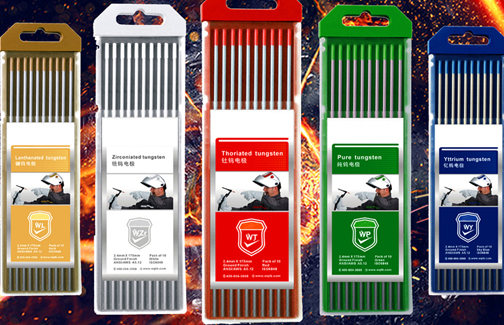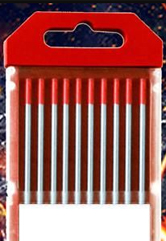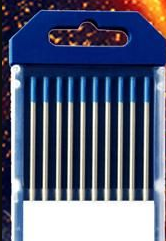A welding electrode is a length of wire that is connected to the welder to create an electric arc. The passage of an electric current through this wire creates an electric arc which generates a large amount of heat to melt and fuse the metal to make the weld.
The electrode is a metal wire with a coating. It is made of a material similar to the metal being welded. Firstly, there are expendable and non-expendable electrodes. In shielded metal arc welding (SMAW), also known as electrode welding, the electrode is expendable, which means that it is consumed and melts with the weld during use.
In tungsten inert gas shielded welding (TIG) the electrodes are non-consumable, so they do not melt and become part of the weld seam. In gas-shielded arc welding (GMAW) or MIG welding, the electrodes are continuously fed with wire. Flux-cored wire arc welding requires a continuous supply of self-consuming tubular electrodes containing flux.
A welding electrode is a coated metal wire. It is made of a material similar to the metal to be welded.

Tungsten Electrode
How do I choose a welding electrode?
There are several types of rod electrodes, each offering different mechanical properties and operating with a specific type of welding power source. Several factors need to be considered when selecting a welding rod.
Base metal properties
Tensile strength
Welding current
Thickness, shape and joint assembly of the base metal
Welding position
Specifications and service conditions
Environmental working conditions
Before starting the machine and picking up the electrode holder, please understand each of these factors in detail.

Thoriated Tungsten Electrode
Base metal properties
The first step in selecting a welding rod is to determine the base metal composition. Your goal is to match (or nearly match) the electrode composition to the base metal type, which will help ensure a strong weld. If you are in doubt about the base metal composition, ask yourself the following questions.
What does the metal look like? If you are working with damaged parts or components, check that the inner surface is rough and grainy, which usually means that the base metal is cast metal.
Is the metal magnetic? If the base metal is magnetic, the base metal is likely to be carbon or alloy steel. If the base metal is not magnetic, the material could be manganese steel, 300 series austenitic stainless steel or a non-ferrous alloy such as aluminum, brass, copper, or titanium.
What kind of sparks do you get when you touch the metal with a grinder? As a rule of thumb, the more flare in the sparks indicates a higher carbon content, e.g. A-36 grade steel.
Does the chisel "bite" into the base metal or does it bounce off? A chisel will bite into softer metals such as mild steel or aluminium and bounce off harder metals such as high-carbon steel, chromium-molybdenum or cast iron.

Lanthanated Tungsten Electrode
Tensile strength
To prevent cracking or other welding discontinuities, match the minimum tensile strength of the electrode to the tensile strength of the base material. You can identify the tensile strength of a rod electrode by referring to the first two digits of the AWS classification printed on the side of the electrode.
For example, the number "60" on an E6011 electrode indicates that the filler metal produces a welded channel with a minimum tensile strength of 60,000 psi, so that steel with a similar tensile strength will work well.
Welding current
Some electrodes can only be used with AC or DC power sources, while others are compatible with both. To determine the correct type of current for a particular electrode, refer to the fourth digit of the AWS classification, which represents the type of coating and the type of compatible welding current.
The type of currency you use will also affect the depth of the fusion profile of the resulting weld. For example, a DCEP-compatible electrode (e.g. E6010) provides deep penetration and produces an extremely tight arc.
It also has the ability to "dig" through rust, oil, paint, and dirt. DCEN-compatible electrodes, such as E6012, provide a gentle depth of fusion and work well when bridging two joints or welding high speed, high current fillet welds in a horizontal position.
AC compatible electrodes, such as E6013, produce a soft arc with a medium depth of fusion and should be used for welding clean new sheet metal.
Base material thickness, shape and joint assembly
Thick materials require an electrode with maximum ductility and low hydrogen to prevent weld cracking. electrodes with AWS classification numbers ending in 15, 16 or 18 have excellent low hydrogen properties and good toughness (high impact values) to accommodate residual stresses.
For thin materials, you need an electrode that produces a soft arc, such as 6013. in addition, a smaller diameter electrode will provide a shallower depth of fusion and help prevent burn-through on thinner materials.
You also need to evaluate the joint design and assembly. If you are working with tight fitting joints or joints without bevels, use an electrode that provides a tapped arc to ensure adequate penetration, such as E6010 or E6011. for materials with wide root openings, choose a welding electrode, such as E6012, which creates a concave weld surface suitable for bridging gaps and making beveled welds.










